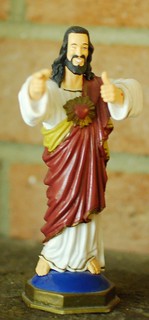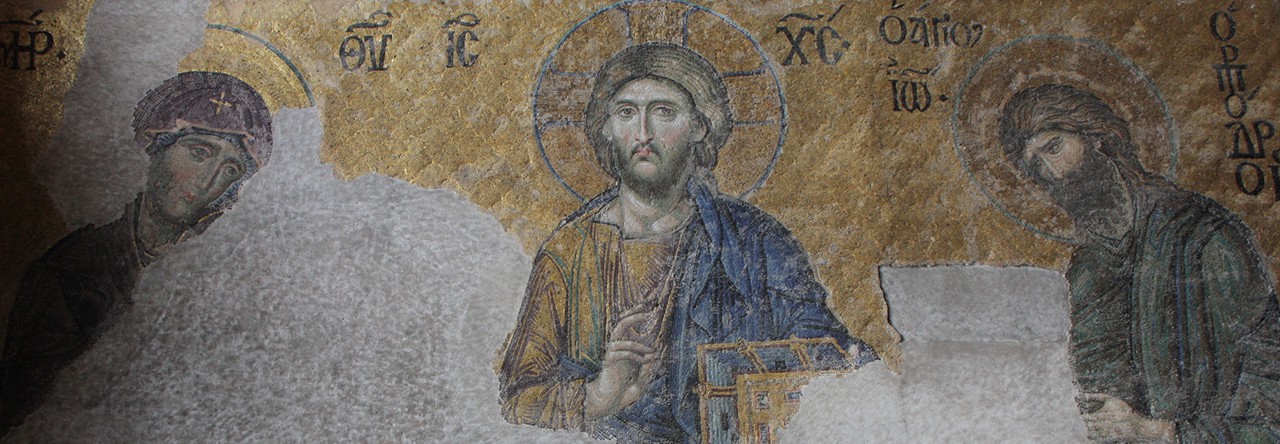 This is the second blog in this series considering the book BAD RELIGION: HOW WE BECAME A NATION OF HERETICS by Ross Douthat. The first blog is A Recent History of American Heresy.
This is the second blog in this series considering the book BAD RELIGION: HOW WE BECAME A NATION OF HERETICS by Ross Douthat. The first blog is A Recent History of American Heresy.
Douthat describes a number of streams of thought in American religion that are distortions of Christianity. He carefully defined heresies, as we saw in the previous blog, as not opposing the truth, but distorting it, or narrowly focusing on one aspect of it in order to make Christianity more rationally consistent and to eliminate tensions which exist in the Bible between various texts. One such stream of thought he labels as modernism, an effort to make Christianity relevant by conforming it especially to scientific and historical facts.
“The modernists’ goal was to adapt Christianity to the new scientific and historical consensus, and to maintain the relevance of faith in an intellectual climate suddenly grown dismissive of the authority of Scripture. To this end, they stressed ethics rather than eschatology; social reform rather than confessional debate; symbolic and allegorical interpretations of the Bible rather than more literal readings. Their great project was the Social Gospel, which urged believers to embrace an ‘applied Christianity’ that would put Jesus’ commandments into practice here and now, through legislation as well as conversion, law, as well as grace.” (p 27)

These ideas were embraced by a large number of mainstream Protestant denominations as well as by some in the Roman Catholic Church. This was a way to try to accommodate Christianity to the truths of science and became the basic thinking in what was to become liberal Protestantism. It became very popular in the mid-20th Century and at first seemed to result in a resurgence of Christianity in America as more biblical literalist ideas were pushed aside. It was an unusual moment in American religious history because it was an embrace of intellectualism which has often been spurned by American religionists.
But with this accommodation to science, there was also a growing abandonment of traditional Christian theology, especially in terms of morality related to marriage and sex. Douthat writes:
“In the 1960s and ‘70s, though, the heretics carried the day completely. America in those years became more religious but less traditionally Christian; more supernaturally minded but less churched; more spiritual in its sentiments but less pious in its practices. It was a golden age if you wanted to talk about UFOs or crystals, the Kama Sutra or the I Ching. It was a fertile period if you said ‘Christianity” but meant fundamentalism or Marxism or the New Age, the gospel of the flower children or the gospel of health and wealth. But amid all of this enthusiasm, all of this hunger for the numinous and transcendent and revolutionary, the message of Christianity itself seemed to have suddenly lost is credibility.” (p 64)
However, not all Christians favored the accommodationists approach to the changing world. Some tried to resist the changes that were occurring in American religious sentiments. In the mid-20th Century, Christianity experienced a resurgence and popularity, but as the 1960s and ‘70s came along, Christianity’s influence began to decline. The changes in the Faith embraced by the accommodationists weren’t sustaining the Church’s strength and church membership and attendance went into a steep decline.
“Amid such sweeping challenges to their faith, there were two obvious paths that the Christian churches could take: accommodation or resistance. . . . Both approaches were invoked as solutions to Christianity’s struggles, and both were blamed for Christianity’s eclipse. With every drop in church attendance, vocations, or donations, accommodationists would blame the forces of reaction for preventing necessary adaptations, alienating the changing population of a changing country by refusing to change themselves. Resisters would retort that the collapse of Christian culture was a direct consequence of accommodationists’ surrender to contemporary fashions.” (p 83)
 Christianity itself became more polarized between liberals and conservatives, no longer united in a common vision of the Church but antagonistic toward each other’s beliefs, values and direction. What was happening politically in America was simultaneously happening in the Church. There was little difference between the culture wars of American secular society and the religious establishments. The Church was so integrated into society that it no longer was a prophetic voice or able to give people a perspective on politics or to bring to the discussion a viewpoint different than secular politics could offer. Those who tried to resist the Tsunami of social change sweeping America, turned to more conservative ideas, and yet Douthat points out they too embraced distorted views of Christianity: thus were promoting their own version of heresy.
Christianity itself became more polarized between liberals and conservatives, no longer united in a common vision of the Church but antagonistic toward each other’s beliefs, values and direction. What was happening politically in America was simultaneously happening in the Church. There was little difference between the culture wars of American secular society and the religious establishments. The Church was so integrated into society that it no longer was a prophetic voice or able to give people a perspective on politics or to bring to the discussion a viewpoint different than secular politics could offer. Those who tried to resist the Tsunami of social change sweeping America, turned to more conservative ideas, and yet Douthat points out they too embraced distorted views of Christianity: thus were promoting their own version of heresy.
“Moreover, many of them remained doubtful custodians of Christian orthodoxy. They were havens for political conservatives, overall, and they tended to be more supernaturalist and stringent about sexual morality than some of their competitors. But the successes of the neo-evangelical project notwithstanding, their theological conservatism was often still the apocalyptism of the fundamentalist cul-de-sac, or else a mix of prosperity preaching and the gospel of self-help—the Evangelicalism of the Left Behind novels and Joel Osteen, one might say, rather than of bill Graham or C.S. Lewis. Some of America’s Evangelical churches provided a rallying point for orthodoxy Christians in the difficult post-1960s landscape. But others provided fertile ground for the heresies that increasingly dominated American religion.” (pp 61-62)
The conservative forms of Christianity confused nationalist tendencies with Christianity and so marched down other side roads. As Douthat describes it:
“Like the accommodationists before them, the resistance project assumed that Christianity’s chief peril was growing unbelief, when the greater peril was really the rival religious beliefs – pseudo-Christian and heretical…” (p 131)
 Both Christian liberals and conservatives, cultural accommodationists and resistors, made the same mistake of assuming that the threat to Christianity was secular unbelief. Douthat however proposes that the real threat to Christianity was one growing in the Church: pseudo versions of Christian thinking. Heretical in the sense that they didn’t deny Christianity, but rather focused on some small part of it and ignored the rest, thus distorting it and reshaping it into versions that suited each person’s own criterion. Everyone could create their own Jesus, modeled in their personal image and likeness. Everyone could form their own church, a version of Christianity that suited their sensibilities and certainly didn’t challenge their own values.
Both Christian liberals and conservatives, cultural accommodationists and resistors, made the same mistake of assuming that the threat to Christianity was secular unbelief. Douthat however proposes that the real threat to Christianity was one growing in the Church: pseudo versions of Christian thinking. Heretical in the sense that they didn’t deny Christianity, but rather focused on some small part of it and ignored the rest, thus distorting it and reshaping it into versions that suited each person’s own criterion. Everyone could create their own Jesus, modeled in their personal image and likeness. Everyone could form their own church, a version of Christianity that suited their sensibilities and certainly didn’t challenge their own values.

Pingback: A Recent History of American Heresy | Fr. Ted's Blog
I am not especially well-versed in Mr. Douthat’s work—although I have read some of his essays, I have not read any of his books—but I think this sentence of yours is the heart of issue in this post:
To what extent that is part of your summary of his book and to what extent your own assessment, Father, I don’t know, but it’s a worthy observation. I also rather like his phrase “doubtful custodians of Christian orthodoxy.” Looking forward to the next entry in your series.
“The Church was so integrated…” That is my assessment of what he describes. He is critical of both liberals and conservatives and sees them making similar mistakes even though they are often at odds with each other. Both liberal and conservative Christians with different goals in mind both want the government not just to support their agendas but to help realize them. As I’ve read others say, when the church and state are so totally one, there is no place for the prophet, there is no hope for the dissident, there is no place for the oppressed to find sanctuary. A tension between church and state can be healthy for both.
James Madison argued that the state churches of Europe had emptied the pews. He felt the church would be stronger when it didn’t rely on the state to enforce its message but when it actually won over the hearts and minds of people. Yet, in America liberal and conservative Christians seem to think the battle to be won is to get the state to be on their side and support their agenda and causes. The Constitution is a wonderful governing document, perhaps one of the best that the minds of men can conceive but the Church is supposed to have the mind of Christ.
Pingback: Wordpress Blogs - Wordpress Blogs .NET
Pingback: Some More American Heresies | Fr. Ted's Blog